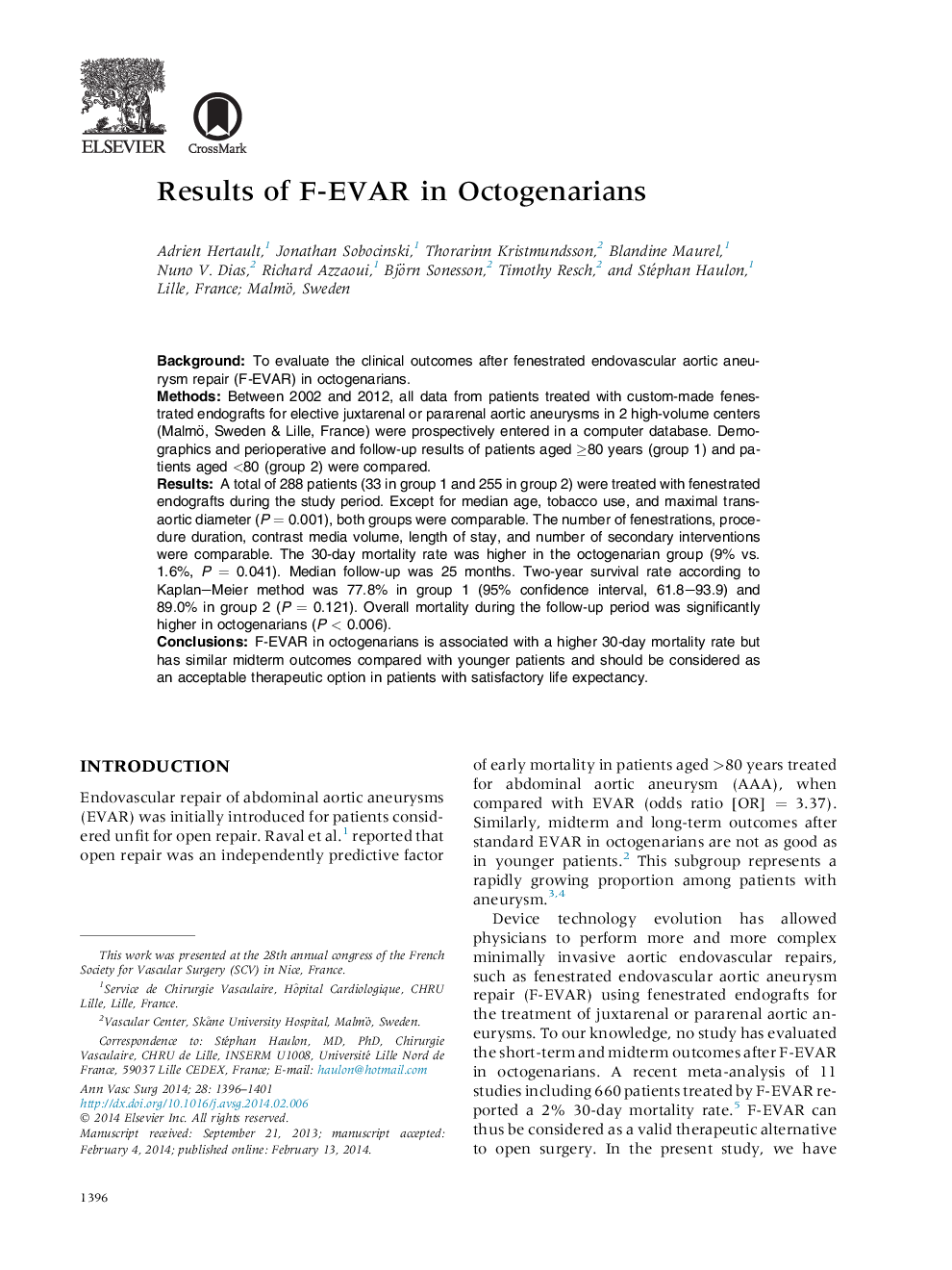| Article ID | Journal | Published Year | Pages | File Type |
|---|---|---|---|---|
| 2886626 | Annals of Vascular Surgery | 2014 | 6 Pages |
BackgroundTo evaluate the clinical outcomes after fenestrated endovascular aortic aneurysm repair (F-EVAR) in octogenarians.MethodsBetween 2002 and 2012, all data from patients treated with custom-made fenestrated endografts for elective juxtarenal or pararenal aortic aneurysms in 2 high-volume centers (Malmö, Sweden & Lille, France) were prospectively entered in a computer database. Demographics and perioperative and follow-up results of patients aged ≥80 years (group 1) and patients aged <80 (group 2) were compared.ResultsA total of 288 patients (33 in group 1 and 255 in group 2) were treated with fenestrated endografts during the study period. Except for median age, tobacco use, and maximal transaortic diameter (P = 0.001), both groups were comparable. The number of fenestrations, procedure duration, contrast media volume, length of stay, and number of secondary interventions were comparable. The 30-day mortality rate was higher in the octogenarian group (9% vs. 1.6%, P = 0.041). Median follow-up was 25 months. Two-year survival rate according to Kaplan–Meier method was 77.8% in group 1 (95% confidence interval, 61.8–93.9) and 89.0% in group 2 (P = 0.121). Overall mortality during the follow-up period was significantly higher in octogenarians (P < 0.006).ConclusionsF-EVAR in octogenarians is associated with a higher 30-day mortality rate but has similar midterm outcomes compared with younger patients and should be considered as an acceptable therapeutic option in patients with satisfactory life expectancy.
